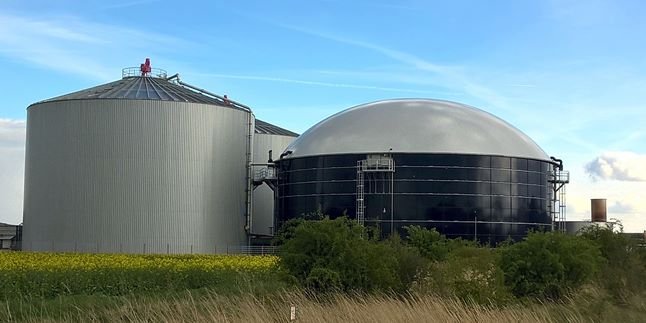Kapanlagi.com - When reading a book or watching a movie, sometimes we will come across an epilogue. Generally, the epilogue is located at the end of the story. Although it has become a common term, the reality is that many people do not know what an epilogue is. However, the epilogue can be an important part of a story in a book or movie.
Basically, an epilogue is a part of the story. However, many people are unaware of the epilogue because it is packaged separately from the main story. In general, an epilogue is a part of a story in literary works, books, or movies that show the conclusion or message for the audience.
To understand more about the importance of the epilogue in a story, read the following discussion that has been summarized by kapanlagi.com from various sources.
1. Epilog is

(credit: unsplash)
According to the Great Indonesian Dictionary (KBBI), the meaning of epilog is the closing part of a literary work, which functions to convey the essence or interpret the meaning of the story. Referring to that meaning, the epilog can be said to have an important position in a work. However, not every literary work has an epilog. Therefore, its application depends on the style and choices of each writer.
If associated with the conflict in a story, it means that the epilog is a form of problem resolution. Therefore, the epilog is always placed at the end of the story. Sometimes, the epilog also appears in various forms such as wise words, reflection forms, moral lessons, messages, and certain values that the author wants to convey to the reader.
2. Characteristics of an Epilog

(credit: unsplash)
Epilogs are actually quite often used in a work. However, sometimes because it is dissolved in the story, someone does not realize the existence of the epilog. Even though in a story, the epilog can be found by identifying several characteristics. The characteristics of an epilog are as follows.
1) Located at the end of the story.
2) Generally a conclusion or a brief description of the whole story.
3) Contains wisdom, essence, message, advice, often in the form of pearls of wisdom or wise words.
4) Sometimes accompanied by a thank you from the author.
5) If the story is a series, then the epilog will become a bridge between the existing story and the next story.
6) Restores the fate of the characters in the story, especially at the end of the conflict.
3. Characteristics of an Epilogue
Epilogues are actually quite often used in a work. However, sometimes because they are dissolved in the story, someone doesn't realize the existence of an epilogue. Whereas in a story, an epilogue can be found by identifying several characteristics. The characteristics of an epilogue are as follows.
1) Located at the end of the story.
2) Generally a conclusion or a brief description of the entire story.
3) Contains wisdom, essence, message, advice, often in the form of pearls of wisdom or wise words.
4) Sometimes accompanied by a thank you message from the author.
5) If the story is a series, then the epilogue will become a bridge between the existing story and the next one.
6) Restores the fate of the characters in the story, especially at the end of the conflict.
4. Differences between an Epilogue and a Prologue

(credit: unsplash)
Besides an epilogue, we also know the term prologue. Just like an epilogue, a prologue is also commonly found in books or movies. Because they sound similar, people often mistakenly differentiate between the two. However, a prologue and an epilogue are two very different things. Therefore, it is important to know what a prologue is and how it differs from an epilogue.
In general, a prologue is the opening or precursor of literary works such as stories, dramas, and so on. A prologue is also often interpreted as an introduction to the content of a literary work. As the beginning of a story, a prologue is useful as a general overview of the story. A prologue should also be made as interesting as possible to attract the attention and interest of readers or viewers.
Based on the description of a prologue above, several differences between a prologue and an epilogue can be concluded as follows:
1) In terms of placement: a prologue is located at the beginning of the story, while an epilogue is at the end of the story.
2) In terms of function: a prologue serves as an introduction or prelude to the story, while an epilogue functions as a conclusion or affirmation of the message in the story.
5. Example Epilogue

(credit: unsplash)
To understand better, you can see the following example epilogue (quoted from insanpelajar.com):
Dian's Story Epilogue
Finally, Dian's sweat and effort paid off. The difficult path of her life did not diminish her determination to achieve success in the future.
For Dian, giving up on the situation is not a solution to face the challenges of life. She keeps pushing forward, even if it means working hard and sweating. It is a principle that she firmly holds.
Now, the once poor Dian has become the CEO of a well-known company in this country. She never imagined that her efforts would take her this far.
Becoming a leader of a company and living a life of wealth does not make her lazy. She still strives to do her best to create more job opportunities in her company.
Dian's perseverance and tenacity can be a lesson for us. In line with the proverb, there is no effort that betrays its results.
Every effort we make sincerely will surely bring benefits. Believe that God is Just. He will not let a drop of His servant's sweat go to waste.
Those are some of the reviews about the epilogue as a reaffirmation in a story, along with its characteristics and differences from the prologue. Hopefully, it is useful and can broaden your knowledge.
(kpl/gen/psp)
Disclaimer: This translation from Bahasa Indonesia to English has been generated by Artificial Intelligence.
















